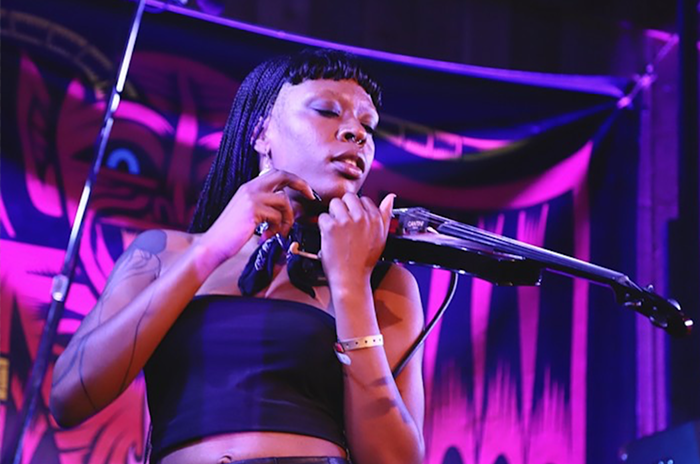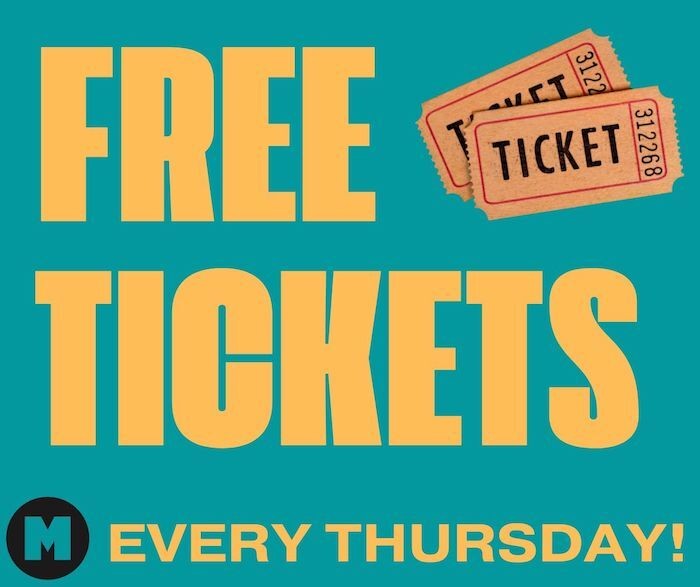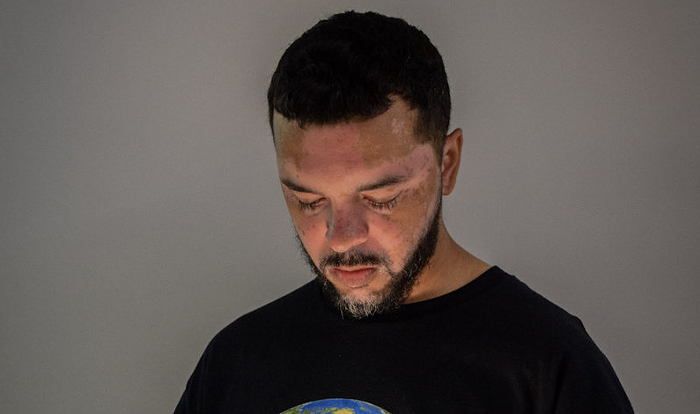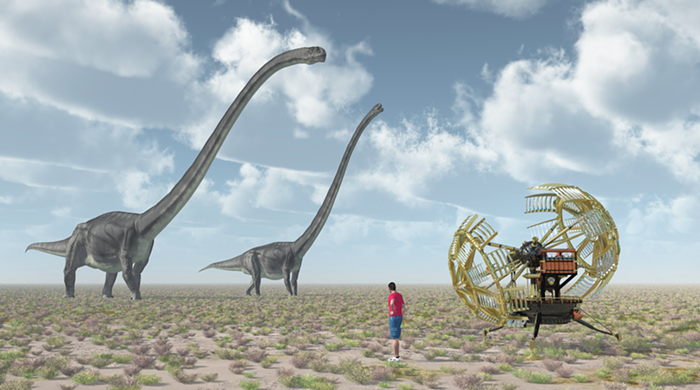DELICATE AND SNARLED, shimmering and spewing white-hot bile, Eat Skull finds muses in the extreme, bolstered—and perhaps insulated—by a wicked sense of humor.
In early 2011, only months after an ill-fated attempt to turn a European tour into a Russian siege left them stranded in the Eastern Bloc, Eat Skull set out for New Zealand. The makeshift five-member lineup arrived with less than $50 between them. Immediately the money was pooled and spent on alcohol.
More recently, at a hometown show in Portland, singer Rob Enbom addressed the audience: "Eat Skull couldn't be here," Enbom said. "We're M.W.A.," which he later explained stood for "More White Art."
Since their 2006 inception, Eat Skull has supplemented their writing and recording with alternative outlets for sharing things other than their dead-flower, drunk-sick pop. On stage they've flouted expectations and, at times, bordered on antagonism. Of those evenings, Enbom says, the band felt something like "Bad juju. Bad blood. Bad blood pumping in your veins."
"It's no secret," Enbom admits. "People were like: 'they're wasted,' or 'they're assholes.' We've done that before. But we were always trying to be funny, really."
Yet in 2009, when it came time to follow up Wild and Inside, Eat Skull's critically acclaimed second album, the next joke fell flatter than the rest—even within the band.
Perturbed with being pigeonholed as "lo-fi," Eat Skull hired Larry Crane, whose Jackpot! Recording Studio fielded Northwest indie luminaries such as Elliott Smith, the Decemberists, and Stephen Malkmus. But for a band who'd always recorded themselves—essentially Enbom and guitarist Rod Meyer experimenting with art to both imitate and escape life on their own time—the shift to a traditional studio was jarring for Eat Skull.
"We didn't like it when we got the finished product," Enbom says of the Jackpot! mixes. "It sounded stupid—which is basically what it's going to sound like when you record with a dude who records the Decemberists or whatever."
Eat Skull took the tracks and split, returning mostly to their own process. Enbom and Meyer continued writing and recording, poring over song after song, mix after mix, free from supervision and any expectations—besides their own, which, despite a slacker's appearance, are anything but.
"That's our world," Enbom says of working with Meyer. "That's just us having fun in a room, recording, just hanging out and being creative in there. That's very fun." Still, finishing the record took time. Almost four years. As Enbom puts it, "Life is fucking weird."
Meyer, Eat Skull's co-founder and principal creative alongside Enbom, needed a break. Family and personal issues shuffled him from Portland to Sacramento where, in his spare time, he attended a yearlong program on modern sound engineering. At the same time Enbom moved to Oakland. The two continued writing and recording, often using collaborators (the finished product includes something like 25 auxiliary players).
After both returned to Portland a year later, Meyer opted out of the tours to Europe and the South Pacific. All the while he kept tweaking, mixing, and remixing, sifting through the 70-odd songs Eat Skull had piled up. Meyer, with help from Enbom, was not necessarily searching for the best. Instead they sought a record with a sense of flow and a common ecosystem.
"It actually helped a lot, not playing live while I was working on the record," Meyer says. "I could see it for other things than a live band."
Written and recorded over four years, across cities, studios, basements, and bedrooms—including the tracks recorded at Jackpot! as well as at Old Standard Sound—III reflects a rich array of environments, inputs, and influences.
Ten songs made the final cut. The most recent was finished late last summer. Together they run the gamut from warm electric meditations to lilting pop, swirling psychedelic synths, an almost celebratory acoustic stomp, a clairvoyant but gloomy dirge, and even a bit of off-kilter, sampler-driven dub.
Nonetheless, III is unified—not only by the singularity of each song's production, or how those disparate arrangements inform each other in sequence, but by the immediacy of the varying concepts and, of course, how they're all twisted by Enbom's swerving melodies, unhinged by his broken rhymes and uninhibited stream-of-consciousness. Indeed, Enbom's crude, naked, irreverent yet wistful wit is nothing if not singular. And though to the uninitiated it may seem scratchy and weird, III is most surely sumptuous; a headphone masterpiece, anything but "lo-fi."
As they move forward, with Meyer returning to the live band, Eat Skull may be leaving behind one of their oldest jokes. They're practicing more, and truly looking forward to playing live. Perhaps the "bad juju" of expectations has begun to dissipate.
"We're having fun with it," Enbom says of Eat Skull's reinvigorated life, both inside and outside the basement. "I think we're having a good time more than we used to."



















